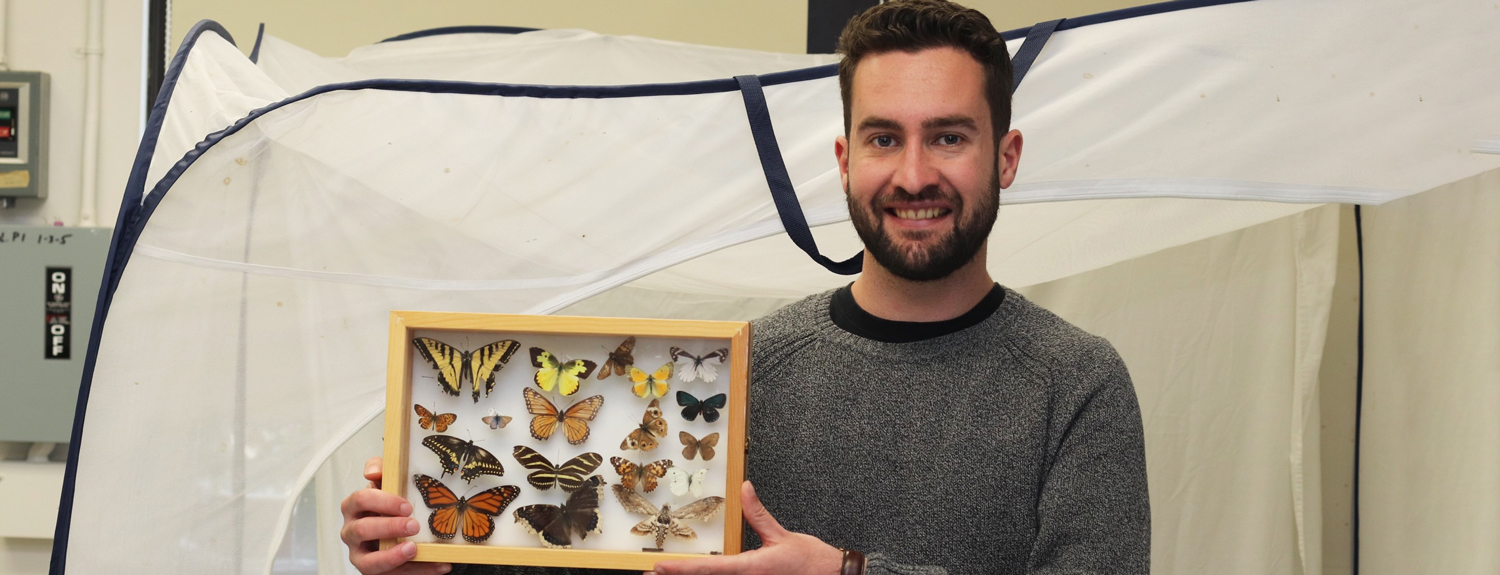
Alexander Shepard
Research Q & A
What’s your hometown?
I grew up near Toronto, Ontario and did my undergraduate and Master’s degrees at McMaster University in the neighboring city of Hamilton, Ontario. I have been in the Twin Cities since 2017.
What are you currently working on?
My research aims to understand why organisms vary in their abilities to adapt to novel, anthropogenic stressors, such as pesticides and heavy metals. Biologists working on this question often assume that the ability of organisms to tolerate these stressful environments must come at a price. That is, to tolerate a stressful environment, organisms must “give up” some other aspect of their biology (e.g., reproductive effort, growth, or immunity). While these tradeoffs play a central role in biological theory, they are often difficult to detect in real-world populations. The goal of my research is to develop a better theoretical and empirical understanding of the nature of tradeoffs associated with adaptation to novel environments. My hope is that this will ultimately allow us to better predict why some organisms will persist and others will perish in today’s human-dominated world.
Funding from the Bell Museum has helped me test how the nutritional environment affects tradeoffs associated with monarch butterfly tolerance to heavy metal pollution.
How are you currently working toward that goal?
I conduct my research experimentally using populations of butterflies from local, wild populations. Butterflies are a great study system because wild-caught individuals can be reared in the laboratory in large numbers for experiments. Butterflies are also very charismatic and well-liked by the public, and many species are targeted for conservation. My current research uses butterflies to test for tradeoffs associated with tolerance to heavy metal pollution, a common and widespread stressor produced by humans.
Why are you focusing your work in that area?
I have long been interested in developing and testing biological theory, but I also enjoy when my work has practical implications. In my current work, I am able to combine these interests by applying biological theory to help improve insect conservation.
Where are you working on research/field work?
The types of questions I pursue often require a high level of experimental control, so most of my work is carried out in the laboratory (Snell-Rood lab on the UMN Twin Cities campus in St. Paul). I mainly work with two butterfly species found in Minnesota: the monarch (Danaus plexippus) and the cabbage white (Pieris rapae). Both species can be easily reared in the laboratory for experiments.
What will your next steps/research be?
A key insight from my work so far has been that when studying natural populations in the laboratory, we often neglect aspects of their natural histories and ecologies that might have a large impact on the results of our experiments. For instance, laboratory environments are often free from pressures that our study organisms may commonly face in the wild, such as resource limitation, competition, and predators. In my future research, I will aim to incorporate more of these natural factors into my experimental work, which may provide novel insights.

